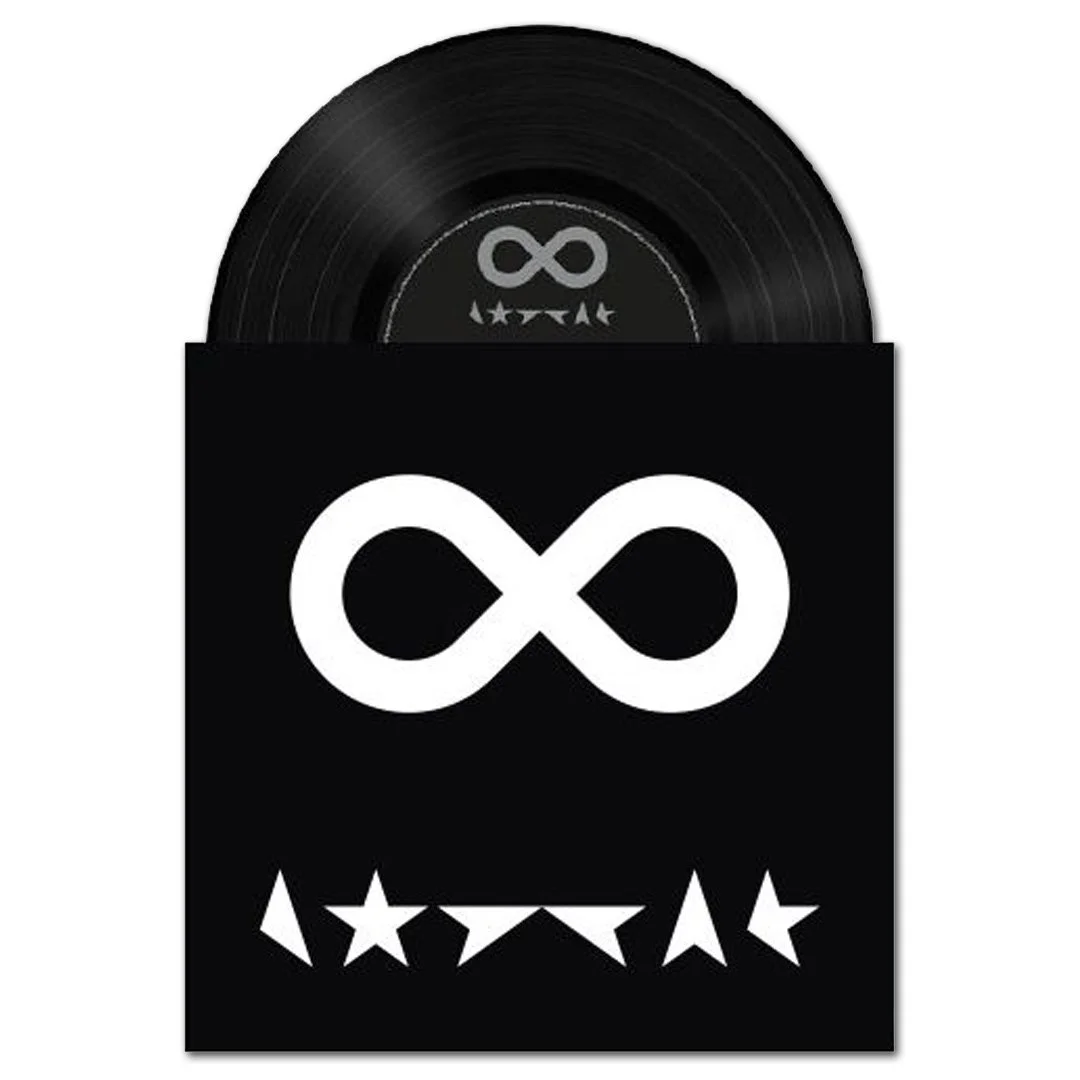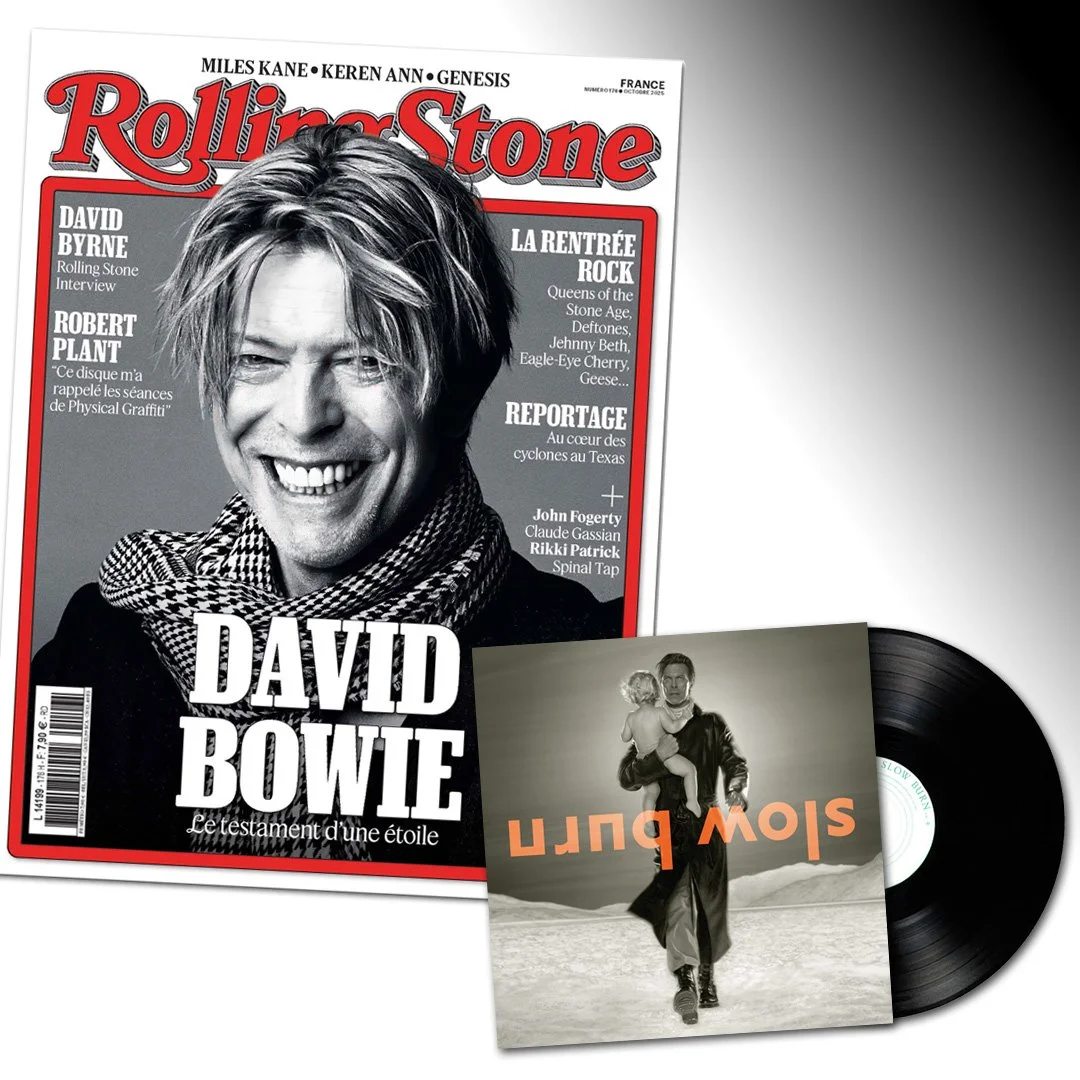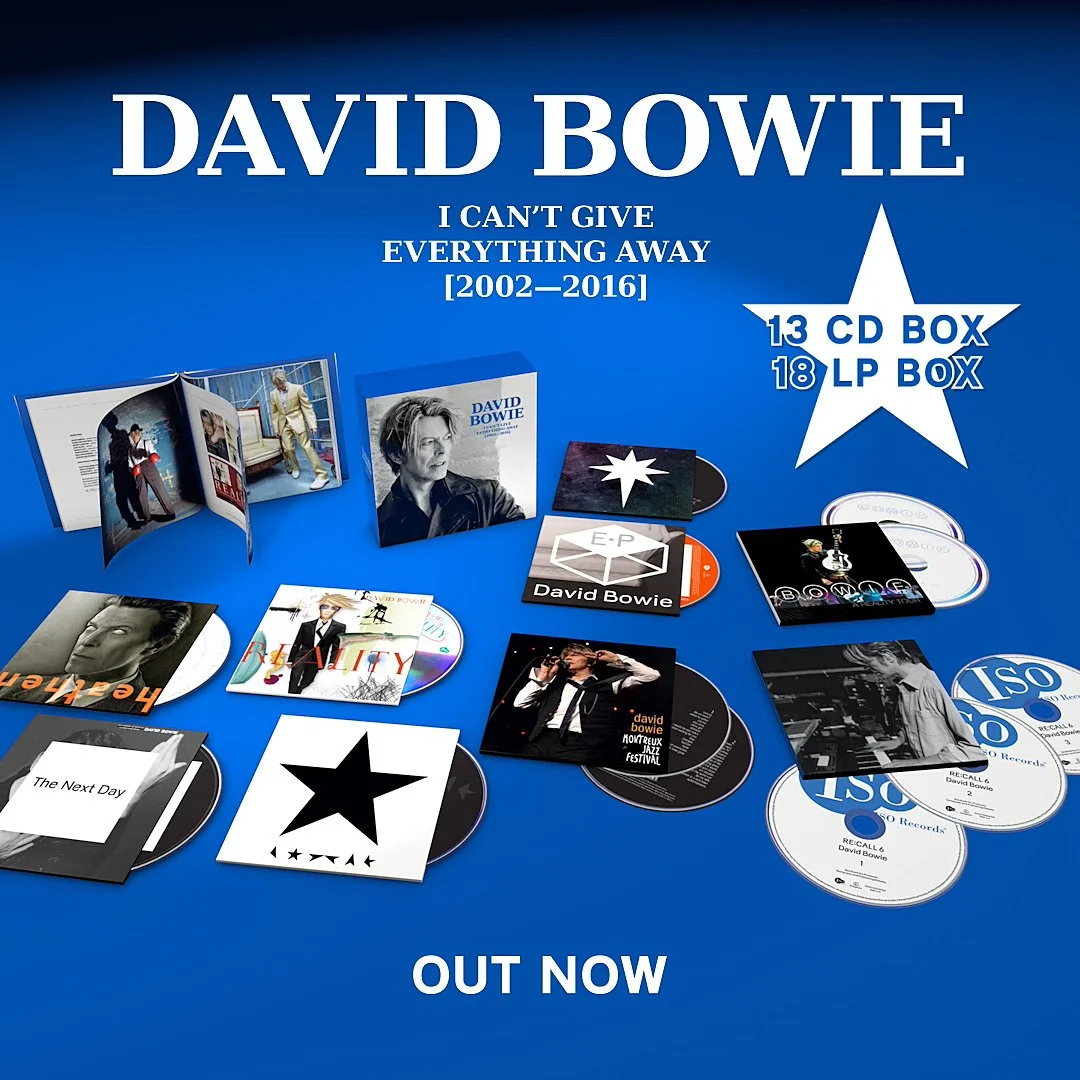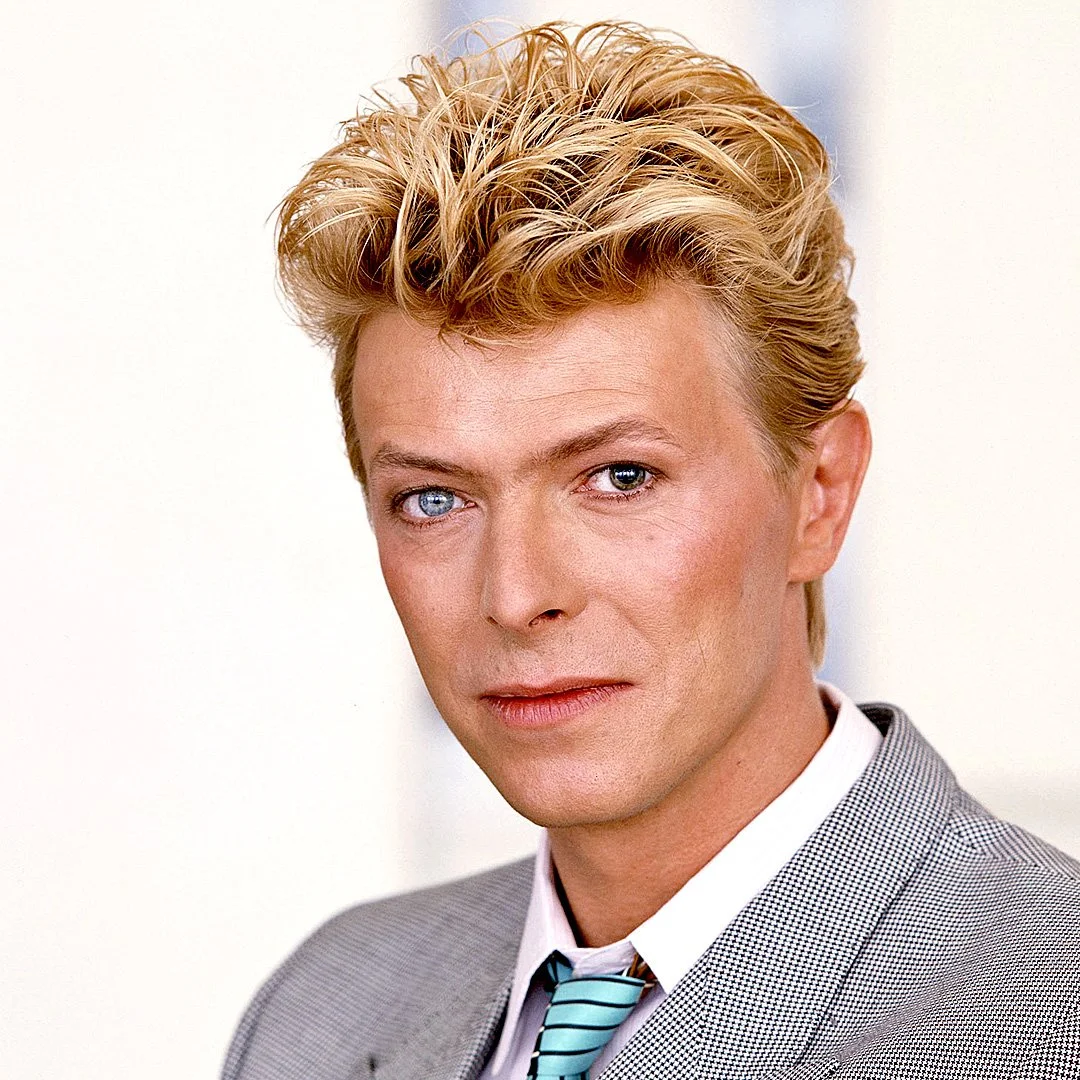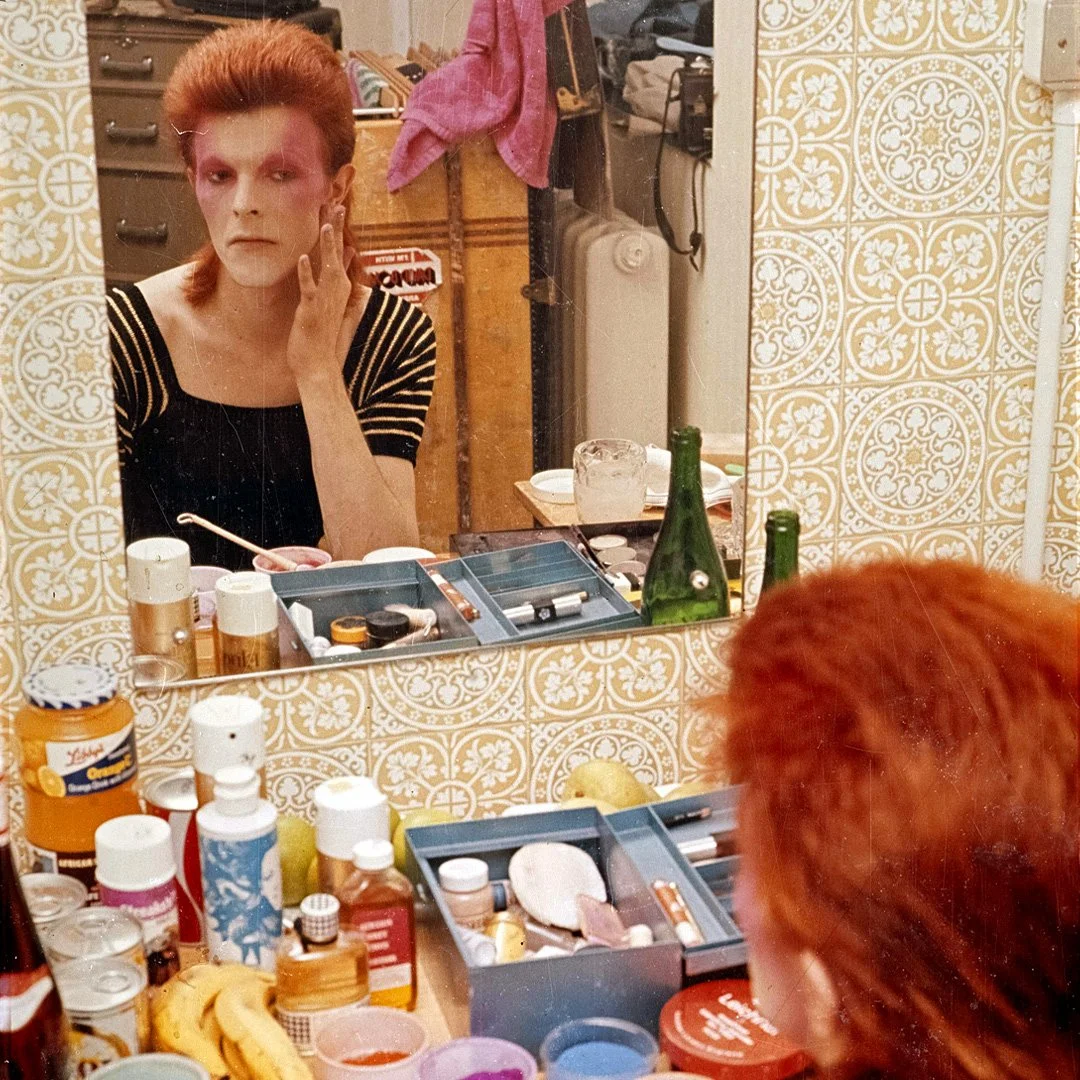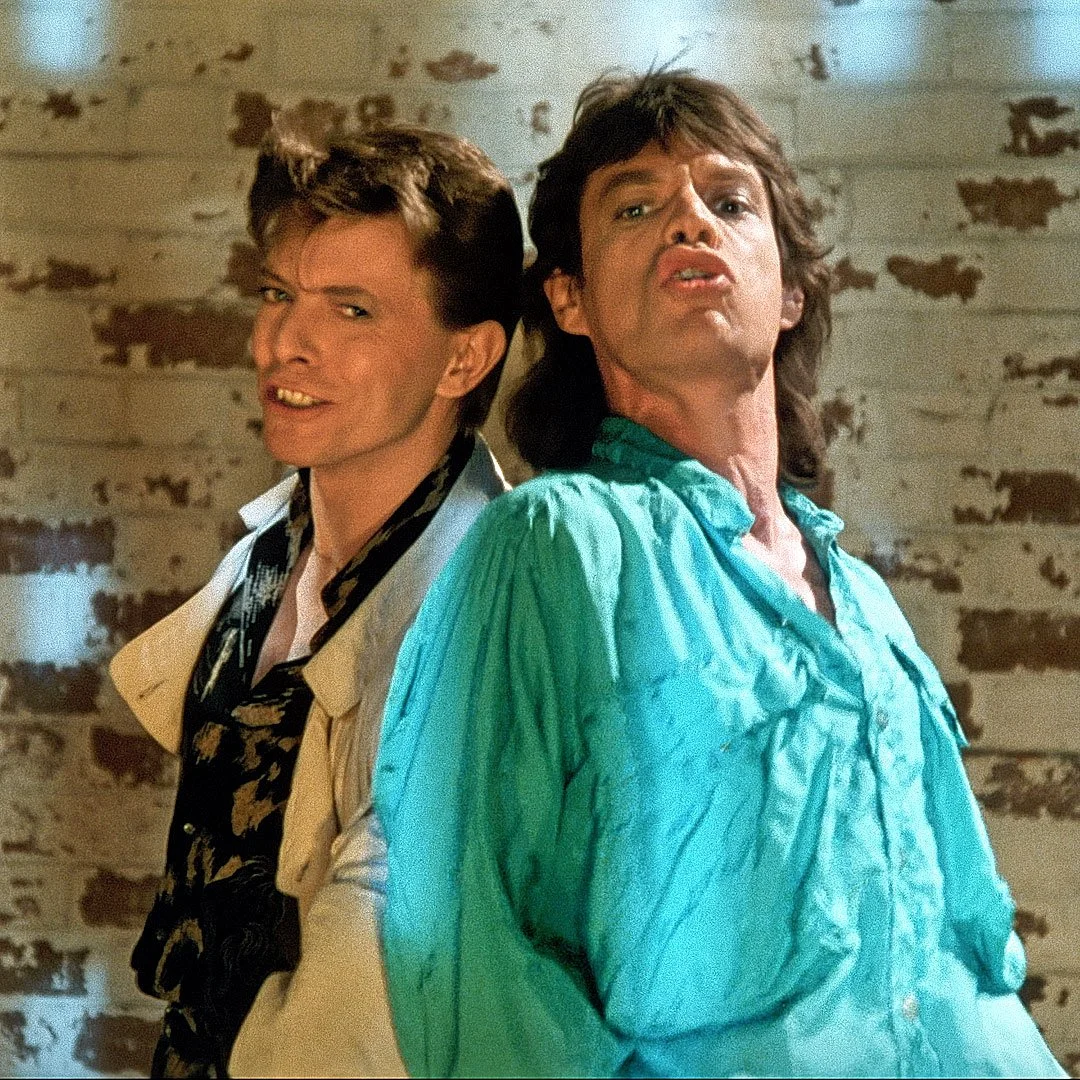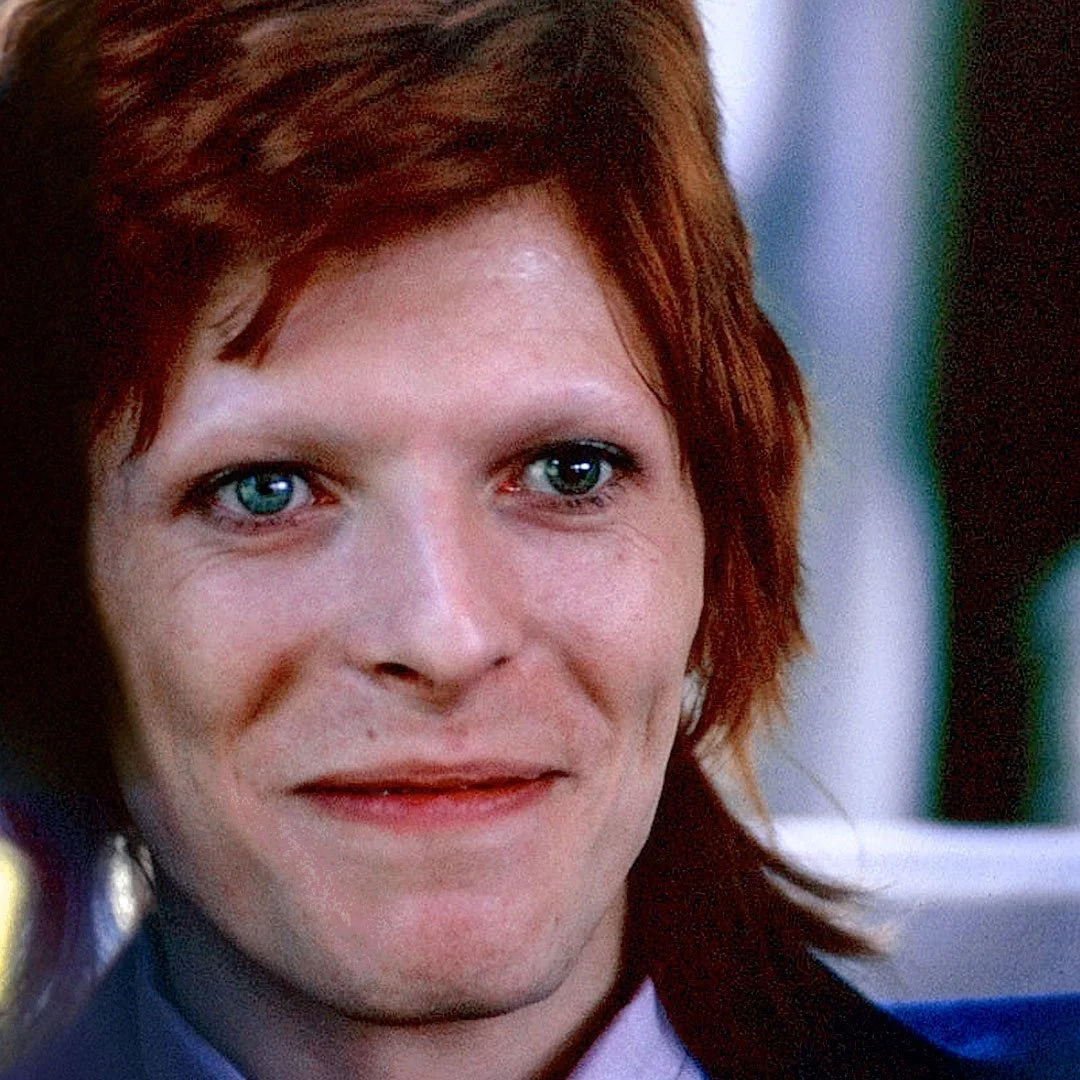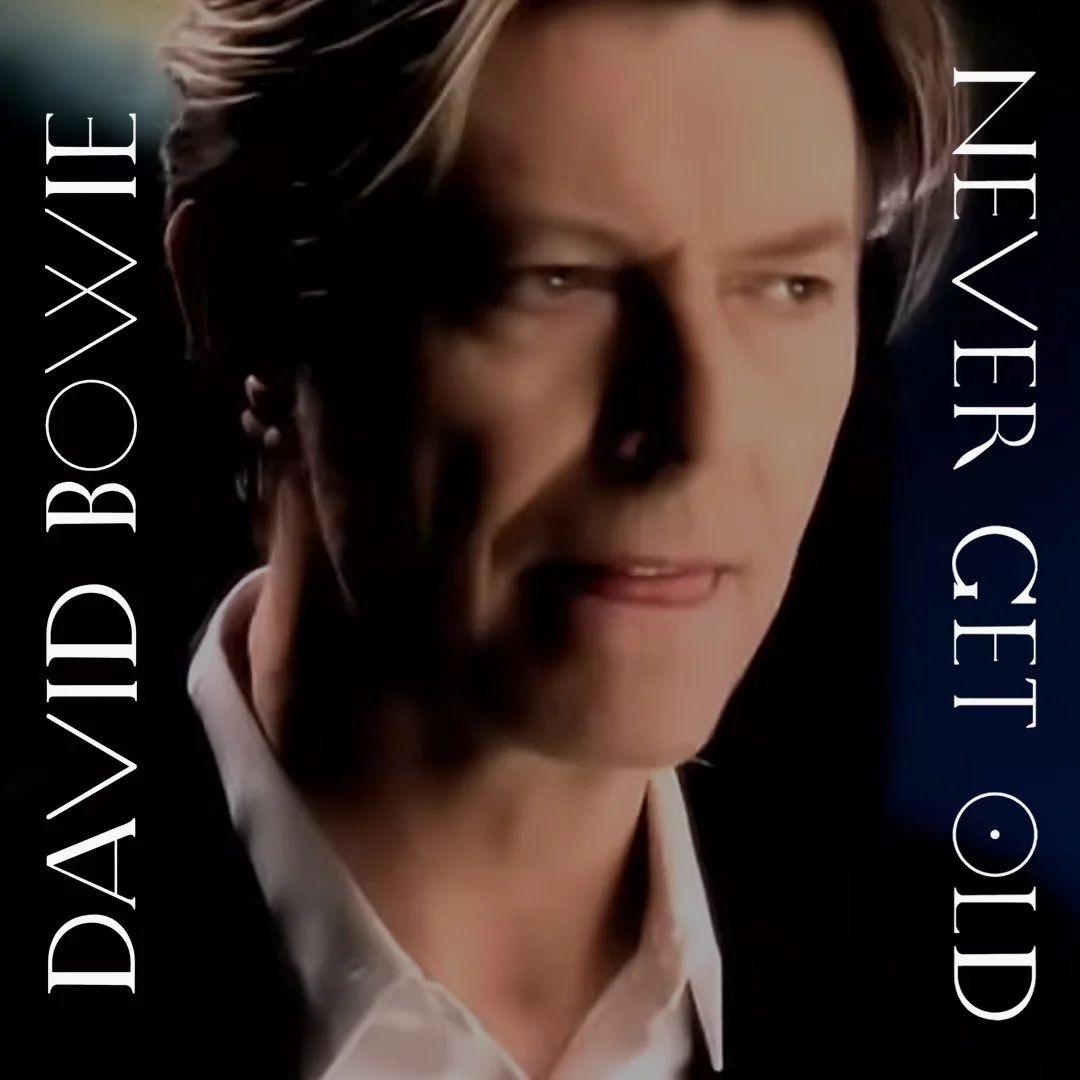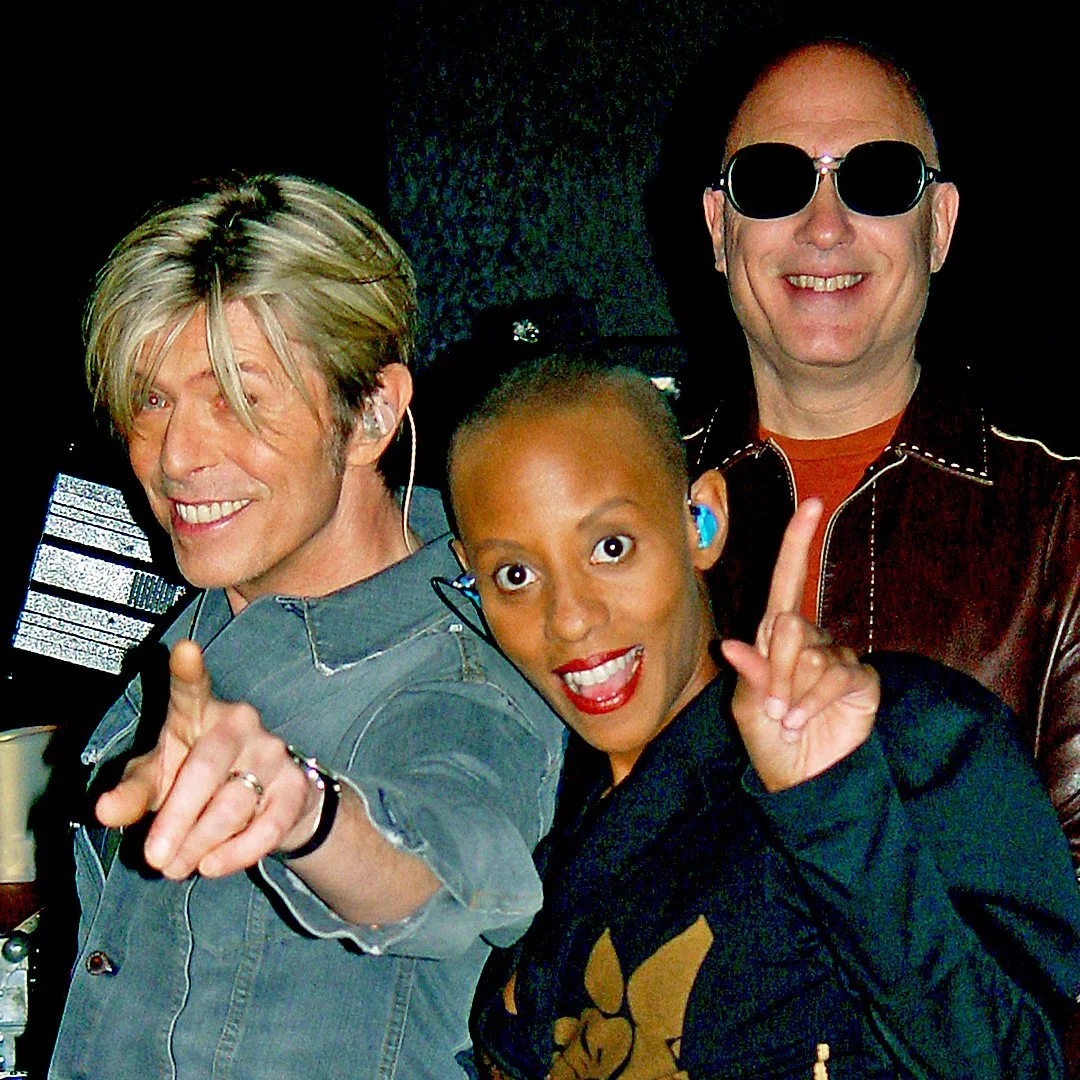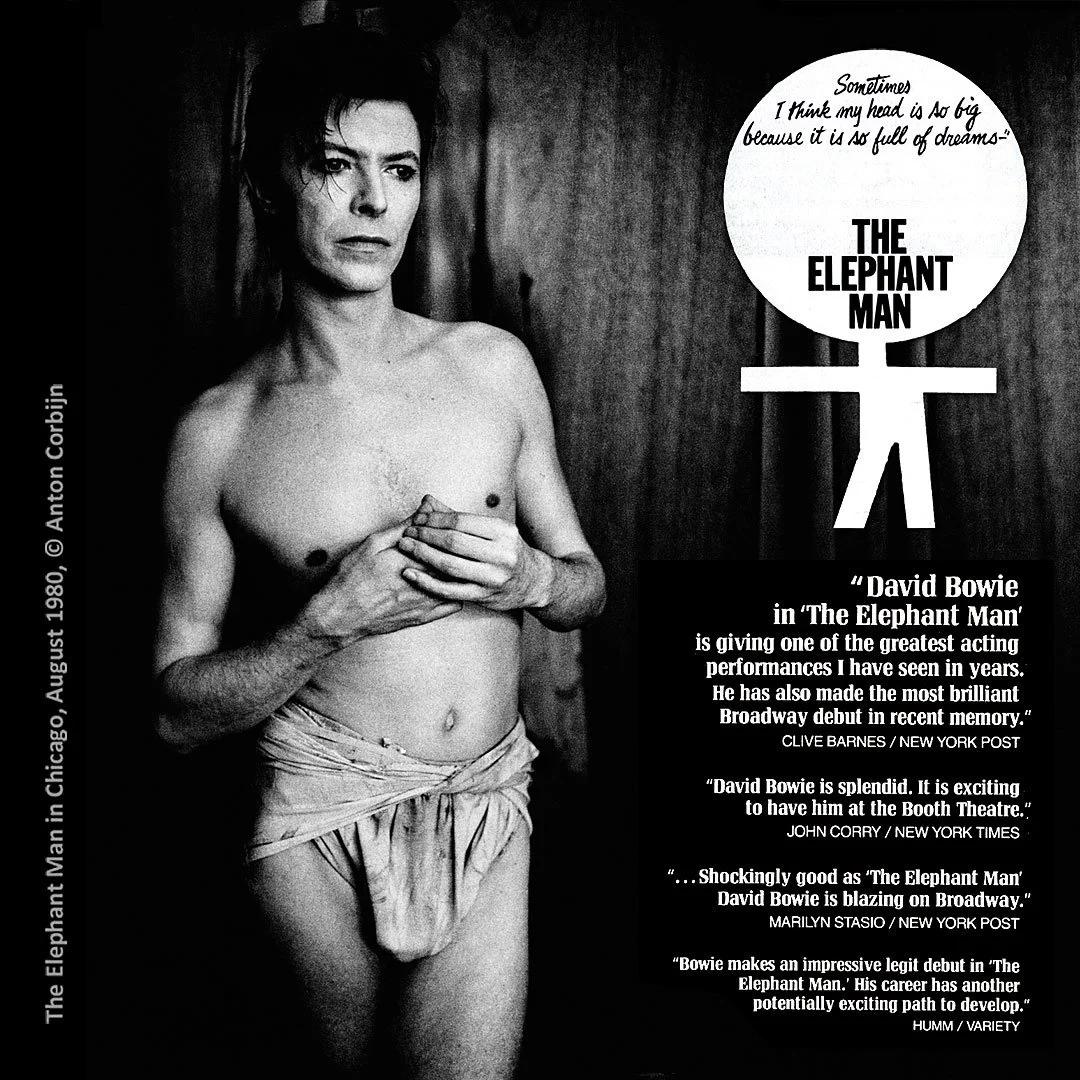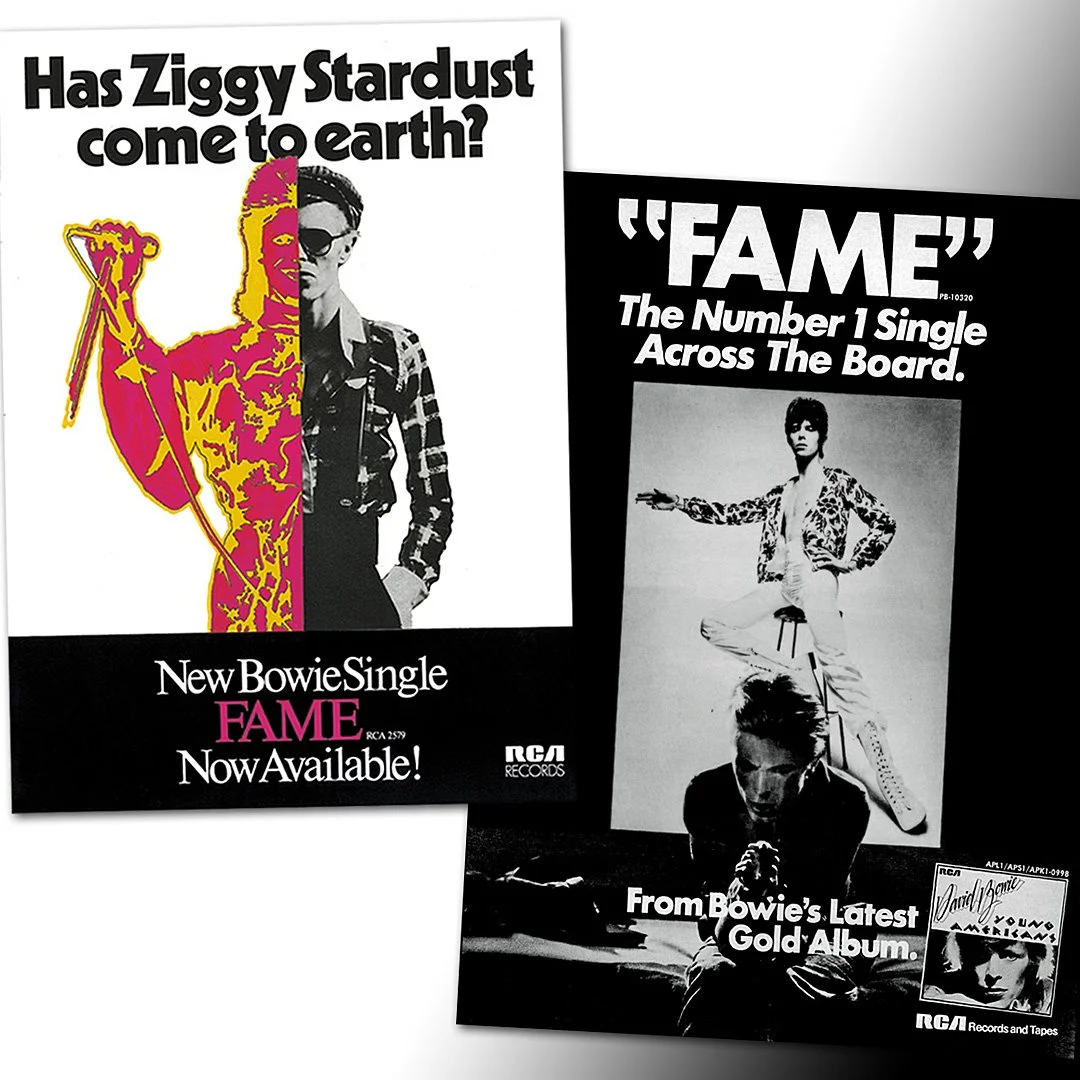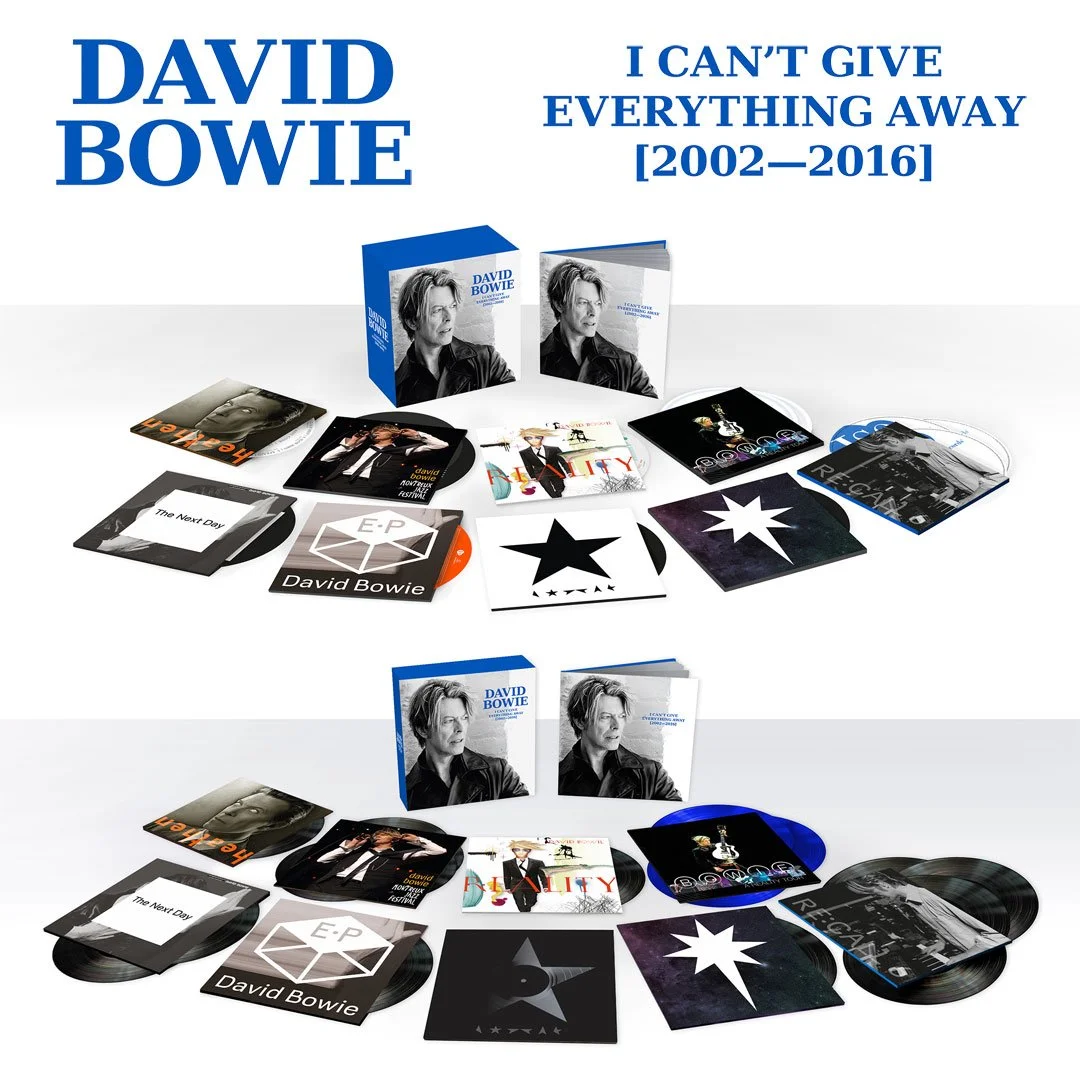DAVID BOWIE 6. I CAN’T GIVE EVERYTHING AWAY (2002 – 2016)
THE SIXTH IN A SERIES OF DAVID BOWIE BOX SETS - RELEASED 12th SEPTEMBER, 2025
13-CD, DIGITAL AND AUDIOPHILE 18-PIECE VINYL BOX SETS INCLUDING...
HEATHEN, REALITY, A REALITY TOUR, THE NEXT DAY, THE NEXT DAY EXTRA, ★ (BLACKSTAR), PREVIOUSLY UNRELEASED 31-TRACK LIVE SET FROM THE MONTREUX JAZZ FESTIVAL AND RE:CALL 6 FEATURING 41 RARE NON-ALBUM TRACKS
NEW KILLER STAR (SESSIONS @ AOL LIVE VERSION, 23/09/03) AVAILABLE NOW AS A DIGITAL SINGLE
STAY TUNED FOR PRE-ORDER LINKS TO DAVID BOWIE 6. I CAN’T GIVE EVERYTHING AWAY (2002 – 2016)
09 JULY, 2025 London - Parlophone Records proudly announce DAVID BOWIE 6. I CAN’T GIVE EVERYTHING AWAY (2002 – 2016), the sixth in a series of box sets spanning Bowie’s career from 1969.
The new set is the latest instalment in the award-winning and critically acclaimed series that includes DAVID BOWIE 1. FIVE YEARS (1969 – 1973), DAVID BOWIE 2. WHO CAN I BE NOW? (1974 – 1976), DAVID BOWIE 3. A NEW CAREER IN A NEW TOWN (1977 – 1982), DAVID BOWIE 4. LOVING THE ALIEN (1983-1988) and DAVID BOWIE 5. BRILLIANT ADVENTURE (1992-2001) and will be released on 12th September.
DAVID BOWIE 6. I CAN’T GIVE EVERYTHING AWAY (2002 – 2016) is a twelve-CD, eighteen-piece vinyl and standard digital download/streaming box set named after the closing track on ★ (BLACKSTAR), Bowie’s final studio album. The box sets include newly remastered versions (except ★ and No Plan), with input from David’s co-producer Tony Visconti.
2002’s HEATHEN was the first album Bowie and Visconti had worked on together in twenty-two years. Recorded in a residential studio in upstate New York, it reminded Visconti of his time with David in Berlin in the 1970s, “There was no control room. The console was at one end of the studio and the band was placed at the other end. The acoustics were quite live and from my experience of making “Heroes” at Hansa Studios in Berlin, in the huge Grand Hall (known as Meistersaal recording hall), I wanted to make these acoustics work for us.” For the follow-up REALITY, released in 2003, Visconti recalls, “David said he wanted to write for his new touring band, who would also record the album”, giving the record a more “Thrusty” sound as Bowie put it at the time. That band then took to the road for A REALITY TOUR, one of the best-loved tours of David’s career, it is represented here for the first time in its re-sequenced order to better reflect the set lists of the Dublin shows. The vinyl version of the album is pressed in transparent blue, echoing its initial release.
After a decade away from the studio, the sessions for THE NEXT DAY happened in secret; Visconti says of that time, “We vowed not to tell a soul that David and we were making a new album – and that even included our domestic partners. His two-fold purpose was to write and create without pressure from the outside, plus he wanted its release to be a complete surprise. It all worked out great, except when he was spotted a few times walking to and from The Magic Shop studio in Noho, Manhattan, raising quizzical eyebrows. I was stopped once by a fan who recognised me and asked, “Is David Bowie making a new album?” I said, “Absolutely not!” Later, when we had rough mixes of our efforts, I was walking around Manhattan with a big smile on my face. No one could possibly know that I was listening to new Bowie songs on my earbuds.” Those sessions produced so many songs that those additional tracks along with two remixes were included on THE NEXT DAY EXTRA.
★ (BLACKSTAR), David’s final studio album, was released on 8th January, 2016. Bowie and Visconti went to Donny McCaslin’s jazz quartet playing live in New York after working with him on the track ‘Sue (Or In A Season Of Crime)’. Tony Visconti: “Donny’s quartet was no ordinary jazz band, they were super musicians at the same level as classical musicians in top symphony orchestras. David told me that this band, with Mark Guiliana – drums, Tim Lefebvre – bass, and Jason Lindner – keyboards, will be the band for the recording of ★.” Every one of the tracks for ★ (BLACKSTAR) were each recorded in one day; Visconti recalls, “The first song for the album began with “’Tis a Pity She Was a Whore,” on 7th January. With a couple of rehearsals with David singing in the isolation booth, we were ready to go. Take one was perfect. We told Donny the take was fabulous. He thanked us and asked, “What’s the next song?” I forgot that jazz musicians are one-take experts. This was not a normal thing for people who make Rock and Pop music. It usually takes many hours to get that great take. Just to play it safe we asked for another take and Donny complied.”
On Bowie’s birthday in 2017, the NO PLAN EP brought together the original songs written for Bowie's Off-Broadway play, LAZARUS, including the titular ‘Lazarus’, ‘No Plan’, ‘Killing A Little Time’, and ‘When I Met You’, all recorded during the sessions for ★ (BLACKSTAR).
Exclusive to each of the box sets are MONTREUX JAZZ FESTIVAL and RE:CALL 6. The former was recorded on the 18th of July 2002 at the prestigious Montreux Jazz Festival and among the 31 tracks features a full performance bar one song of one of Bowie’s most revered albums, LOW. RE:CALL 6 features 41 non-album / alternative versions / b-sides and soundtrack songs, including tracks never previously available on CD or vinyl over 3CDs and 4LPs.
The physical box sets accompanying book, 128 pages in the CD box and 84 in the vinyl set, feature previously unseen notes, drawings and handwritten lyrics from Bowie and photos by Sukita (who took the set’s cover shot), Jimmy King, Frank W. Ockenfels 3, Markus Klinko, Mark ‘Blammo’ Adams and more as well as memorabilia, technical notes about the albums from co-producer Tony Visconti and design notes from Jonathan Barnbrook.
The CD box set will include faithfully reproduced mini-vinyl versions of the original albums where applicable, and the CDs will be gold-coloured rather than the usual silver. The vinyl box set has the same content as the CD set and is pressed on audiophile quality 180g vinyl.
DAVID BOWIE 6. I CAN’T GIVE EVERYTHING AWAY (2002 – 2016)
LP Box Set:
84 page hardback book
Heathen (Remastered) (1LP)
Montreux Jazz Festival (4LP) (Previously unreleased)*
Reality (Remastered) (1LP)
A Reality Tour (Remastered & Re-sequenced) (3LP)
The Next Day (Remastered) (2LP)
The Next Day Extra (Remastered) (1LP)
★ (Blackstar) (1LP)
No Plan (1LP)
Re:Call 6 (Non-album singles, edits, single versions, b-sides and soundtrack music) (Remastered) (4LP)*
* Exclusive to I CAN’T GIVE EVERYTHING AWAY LP box
CD Box Set:
128 page hardback book
Heathen (Remastered) (1CD)
Montreux Jazz Festival (2CD) (Previously unreleased)*
Reality (Remastered) (1CD)
A Reality Tour (Remastered & Re-sequenced) (2CD)
The Next Day (Remastered) (1CD)
The Next Day Extra (Remastered) (1CD)
★ (Blackstar) (1CD)
No Plan (1CD)
Re:Call 6 (Non-album singles, edits, single versions, b-sides and soundtrack music) (Remastered) (3CD)*
*Exclusive to I CAN’T GIVE EVERYTHING AWAY CD box
DAVID BOWIE 6. I CAN’T GIVE EVERYTHING AWAY (2002 – 2016)
CD & DIGITAL TRACKLISTING
HEATHEN
1. Sunday
2. Cactus
3. Slip Away
4. Slow Burn
5. Afraid
6. Iʼve Been Waiting For You
7. I Would Be Your Slave
8. I Took A Trip On A Gemini Spaceship
9. 5:15 The Angels Have Gone
10. Everyone Says ʻHiʼ
11. A Better Future
12. Heathen (The Rays)
MONTREUX JAZZ FESTIVAL
CD1
1. Sunday
2. Life On Mars?
3. Ashes To Ashes
4. Cactus
5. Slip Away
6. China Girl
7. Starman
8. I Would Be Your Slave
9. Ive Been Waiting For You
10. Stay
11. Changes
12. Fashion
13. Fame
14. Im Afraid Of Americans
15. 5:15 The Angels Have Gone
CD2
1. ‟Heroes”
2. Heathen (The Rays)
3. Everyone Says ‟Hi”
4. Hallo Spaceboy
5. Let’s Dance
6. Ziggy Stardust
7. Warszawa
8. Speed Of Life
9. Breaking Glass10. What In The World
11. Sound And Vision
12. Art Decade
13. Always Crashing In The Same Car
14. Be My Wife
15. A New Career In A New Town
16. Subterraneans
REALITY
1. New Killer Star
2. Pablo Picasso
3. Never Get Old
4. The Loneliest Guy
5. Looking For Water
6. She’ll Drive The Big Car
7. Days
8. Fall Dog Bombs The Moon
9. Try Some, Buy Some
10. Reality
11. Bring Me The Disco King
A REALITY TOUR
CD1
1. Rebel Rebel
2. New Killer Star
3. Reality
4. Fame
5. Cactus
6. Sister Midnight
7. Afraid
8. All The Young Dudes
9. Be My Wife
10. China Girl
11. The Loneliest Guy
12. The Man Who Sold The World
13. Fantastic Voyage
14. Hallo Spaceboy
15. Sunday
16. Under Pressure
17. Life On Mars?
18. Battle For Britain (The Letter)
CD2
1. Fall Dog Bombs The Moon
2. Ashes To Ashes
3. The Motel
4. Loving The Alien
5. Breaking Glass
6. Never Get Old
7. Changes
8. I’m Afraid Of Americans
9. ‟Heroes”
10. Bring Me The Disco King
11. Slip Away
12. Heathen (The Rays)
13. Five Years
14. Hang On To Yourself
15. Ziggy Stardust
THE NEXT DAY
1. The Next Day
2. Dirty Boys
3. The Stars (Are Out Tonight)
4. Love Is Lost
5. Where Are We Now?
6. Valentine’s Day
7. If You Can See Me
8. I’d Rather Be High
9. Boss Of Me
10. Dancing Out In Space
11. How Does The Grass Grow?
12. (You Will) Set The World On Fire
13. You Feel So Lonely You Could Die
14. Heat
THE NEXT DAY EXTRA E.P.
1. Atomica
2. Love Is Lost (Hello Steve Reich Mix By James Murphy For The DFA)
3. Plan
4. The Informer
5. I’d Rather Be High (Venetian Mix)
6. Like A Rocket Man
7. Born In A UFO
8. I’ll Take You There
9. God Bless The Girl
10. So She
★ (BLACKSTAR)
1. ★
2. ’Tis A Pity She Was A Whore
3. Lazarus
4. Sue (Or In A Season Of Crime)
5. Girl Loves Me
6. Dollar Days
7. I Can’t Give Everything Away
NO PLAN E.P.
1. Lazarus
2. No Plan
3. Killing A Little Time
4. When I Met You
RE:CALL 6
CD1
1. Slow Burn (Single Edit)
2. Wood Jackson
3. When The Boys Come Marching Home
4. Safe
5. Sunday (Moby Remix)
6. A Better Future (Remix By Air)
7. Slip Away (SACD Mix)
8. Slow Burn (SACD Mix)
9. I’ve Been Waiting For You (SACD Mix)
10. 5:15 The Angels Have Gone (SACD Mix)
11. A Better Future (SACD Mix)
12. Safe (SACD Mix)
13. Everyone Says ‘Hi’ (Radio Edit)
CD2
1. Sunday (Tony Visconti Mix)
2. Everyone Says ‘Hi’ (Metro Remix Radio Edit)
3. Heathen (The Rays) (Live In Berlin, 22/09/02)
4. Hop Frog — Lou Reed Featuring David Bowie
5. Saviour — Kristeen Young Featuring David Bowie
6. Isn’t It Evening (The Revolutionary) — Earl Slick Featuring David Bowie
7. Bring Me The Disco King (Loner Mix) — David Bowie Featuring Maynard James Keenan And John Frusciante (Taken From The Underworld Motion Picture Soundtrack)
8. New Killer Star (Radio Edit)
9. Love Missile F1-11
10. Fly
11. Queen Of All The Tarts (Overture)
12. Never Get Old (Single Edit)
13. Waterloo Sunset
14. Rebel Rebel (2003 Re-Record) (Taken From The Charlie’s Angels: Full Throttle Motion Picture Soundtrack)
15. New Killer Star (Sessions @ AOL Live Version, 23/09/03)
CD3
1. Days (Live)
2. 5:15 The Angels Have Gone (Live)
3. Rebel Never Gets Old (Radio Mix)
4. (She Can) Do That — David Bowie With BT (Taken From The Stealth Motion Picture Soundtrack)
5. Life On Mars? (Live At Fashion Rocks, 08/09/05)
6. Wake Up (Live At Fashion Rocks, 08/09/05) — David Bowie With Arcade Fire
7. Five Years (Live At Fashion Rocks, 08/09/05) — David Bowie With Arcade Fire
8. Arnold Layne (Live At The Royal Albert Hall, 29/05/06) — David Gilmour Featuring David Bowie
9. Love Is Lost (Hello Steve Reich Mix By James Murphy For The DFA Edit)
10. Sue (Or In A Season Of Crime) (2014 Version)
11. ’Tis A Pity She Was A Whore (2014 Version)
12. Lazarus (Radio Edit)
13. I Can’t Give Everything Away (Radio Edit)
DAVID BOWIE 6. I CAN’T GIVE EVERYTHING AWAY (2002 – 2016)
LP TRACKLISTING
HEATHEN
Side 1
1. Sunday
2. Cactus
3. Slip Away
4. Slow Burn
5. Afraid
6. I’ve Been Waiting For You
Side 2
1. I Would Be Your Slave
2. I Took A Trip On A Gemini Spaceship
3. 5:15 The Angels Have Gone
4. Everyone Says ʻHiʼ
5. A Better Future
6. Heathen (The Rays)
MONTREUX JAZZ FESTIVAL
Side 1
1. Sunday
2. Life On Mars?
3. Ashes To Ashes
4. Cactus
Side 2
1. Slip Away
2. China Girl
3. Starman
4. I Would Be Your Slave
Side 3
1. I’ve Been Waiting For You
2. Stay
3. Changes
4. Fashion
Side 4
1. Fame
2. I’m Afraid Of Americans
3. 5:15 The Angels Have Gone
4. ‟Heroes”
Side 5
1. Heathen (The Rays)
2. Everyone Says ‟Hi”
3. Hallo Spaceboy
Side 6
1. Letʼs Dance
2. Ziggy Stardust
3. Warszawa
Side 7
1. Speed Of Life
2. Breaking Glass
3. What In The World
4. Sound And Vision
5. Art Decade
Side 8
1. Always Crashing In The Same Car
2. Be My Wife
3. A New Career In A New Town
4. Subterraneans
REALITY
Side 1
1. New Killer Star
2. Pablo Picasso
3. Never Get Old
4. The Loneliest Guy
5. Looking For Water
6. She’ll Drive The Big Car
Side 2
1. Days
2. Fall Dog Bombs The Moon
3. Try Some, Buy Some
4. Reality
5. Bring Me The Disco King
A REALITY TOUR
Side 1
1. Rebel Rebel
2. New Killer Star
3. Reality
4. Fame
5. Cactus
6. Sister Midnight
Side 2
1. Afraid
2. All The Young Dudes
3. Be My Wife
4. China Girl
5. The Loneliest Guy
6. The Man Who Sold The World
7. Fantastic Voyage
Side 3
1. Hallo Spaceboy
2. Sunday
3. Under Pressure
4. Life On Mars?
5. Battle For Britain (The Letter)
Side 4
1. Fall Dog Bombs The Moon
2. Ashes To Ashes
3. The Motel
4. Loving The Alien
5. Breaking Glass
6. Never Get Old
Side 5
1. Changes
2. I’m Afraid Of Americans
3. ‟Heroes”
4. Bring Me The Disco King
Side 6
1. Slip Away
2. Heathen (The Rays)
3. Five Years
4. Hang On To Yourself
5. Ziggy Stardust
THE NEXT DAY
Side 1
1. The Next Day
2. Dirty Boys
3. The Stars (Are Out Tonight)
4. Love Is Lost
Side 2
1. Where Are We Now?
2. Valentine’s Day
3. If You Can See Me
4. I’d Rather Be High
Side 3
1. Boss Of Me
2. Dancing Out In Space
3. How Does The Grass Grow?
4. (You Will) Set The World On Fire
Side 4
1. You Feel So Lonely You Could Die
2. Heat
3. So She
4. Plan
5. I’ll Take You There
THE NEXT DAY EXTRA E.P.
Side 1
1. Atomica
2. Love Is Lost (Hello Steve Reich Mix By James Murphy For The DFA)
3. The Informer
Side 2
1. I’d Rather Be High (Venetian Mix)
2. Like A Rocket Man
3. Born In A UFO
4. God Bless The Girl
★ BLACKSTAR
Side 1
1. ★
2. ’Tis A Pity She Was A Whore
3. Lazarus
Side 2
1. Sue (Or In A Season Of Crime)
2. Girl Loves Me
3. Dollar Days
4. I Can’t Give Everything Away
NO PLAN E.P.
Side 1
1. Lazarus
2. No Plan
3. Killing A Little Time
4. When I Met You
Side 2
Etching
RE:CALL 6
Side 1
1. Slow Burn (Single Edit)
2. Wood Jackson
3. When The Boys Come Marching Home
4. Safe
5. Sunday (Moby Remix)
Side 2
1. A Better Future (Remix By Air)
2. Slip Away (SACDMix)
3. Slow Burn (SACD Mix)
4. I’ve Been Waiting For You (SACD Mix)
5. 5:15 The Angels Have Gone (SACD Mix)
Side 3
1. A Better Future (SACD Mix)
2. Safe (SACD Mix)
3. Everyone Says ‘Hi’ (Radio Edit)
4. Sunday (Tony Visconti Mix)
5. Everyone Says ‘Hi’ (Metro Remix Radio Edit)
Side 4
1. Heathen (The Rays) (Live In Berlin, 22/09/02)
2. Hop Frog — Lou Reed Featuring David Bowie
3. Saviour — Kristeen Young Featuring David Bowie
4. Isn’t It Evening (The Revolutionary) — Earl Slick Featuring David Bowie
5. Bring Me The Disco King (Loner Mix) — David Bowie Featuring Maynard James Keenan And John Frusciante (Taken From The Underworld Motion Picture Soundtrack)
Side 5
1. New Killer Star (Radio Edit)
2. Love Missile F1-11
3. Fly
4. Queen Of All The Tarts (Overture)
5. Never Get Old (Single Edit)
6. Waterloo Sunset
Side 6
1. Rebel Rebel (2003 Re-Record) (Taken From The Charlie’s Angels: Full Throttle Motion Picture Soundtrack)
2. New Killer Star (Sessions @ AOL Live Version, 23/09/03)
3. Days (Live)
4. 5:15 The Angels Have Gone (Live)
5. Rebel Never Gets Old (Radio Mix)
6. (She Can) Do That — David Bowie With BT (Taken From The Stealth Motion Picture Soundtrack)
Side 7
1. Life On Mars? (Live At Fashion Rocks, 08/09/05)
2. Wake Up (Live At Fashion Rocks, 08/09/05) — David Bowie With Arcade Fire
3. Five Years (Live At Fashion Rocks, 08/09/05) — David Bowie With Arcade Fire
4. Arnold Layne (Live At The Royal Albert Hall, 29/05/06) — David Gilmour Featuring David Bowie
5. Love Is Lost (Hello Steve Reich Mix By James Murphy For The DFA Edit)
Side 8
1. Sue (Or In A Season Of Crime) (2014 Version)
2. ’Tis A Pity She Was A Whore (2014 Version)
3. Lazarus (Radio Edit)
4. I Can’t Give Everything Away (Radio Edit)
DAVID BOWIE 6. I CAN’T GIVE EVERYTHING AWAY (2002 – 2016)
THE SIXTH IN A SERIES OF DAVID BOWIE BOX SETS
RELEASED 12th SEPTEMBER, 2025
Stay tuned for pre-order links.
Box cover image (c) Sukita - The David Bowie Archvie
#BowieICGEAbox


